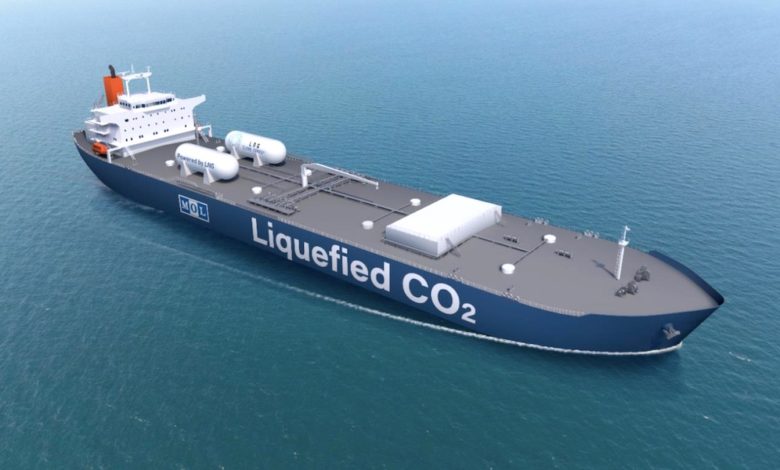Companies looking at solutions for industrial-scale CO2 shipping

Five partners from Australia and Japan have signed a research and development agreement to develop solutions for industrial-scale shipping of CO2.
Future Energy Exports (FEnEx CRC), JX Nippon), Low Emission Technology Australia (LETA), Mitsui O.S.K. Lines, and Osaka Gas will be looking into the feasibility and operability of low-pressure and low-temperature solutions for ship transport of CO2.
The project will involve studying the behaviour and boil-off characteristics of liquid CO2 under dynamic operating conditions and the impact of non-CO2 components.
The current design of liquefied CO2 vessels has a limited storage volume due to their operating pressure and temperature of 18 bar and -26°C. Low pressures and low temperatures of around 7 bar and -49°C are the best option for significantly reducing the costs of CO2 vessel design. However, there is no record of liquefied CO2 transportation by ship under such conditions.
The point of this project is to address operational risks and enhance the likelihood of technical feasibility. If successful, technologies needed to safely and efficiently ship large quantities of CO2 could be developed.
The project will be executed by FEnEx CRC, the University of Western Australia, Curtin University, Seoul National University, and deepC Store.
The data revealed from the experiments will be incorporated into engineering models for CO2 boil-off and phase behaviour calculations developed by the FEnEx CRC. A pilot-scale CCUS demonstration test will then be designed to validate the engineering models related to the acquired laboratory data that can be upscaled as part of a subsequent project.
“Low-pressure and low-temperature liquified CO2 is an essential technology for economical CO2 transport. We expect to gain knowledge for handling CO2 under this demonstration condition which we have not experienced before,” added Osaka Gas associate director Norio Hatanaka.
MOL last year gave the world a glimpse of what a large liquefied CO2 carrier could look like. The company also received approval in principle from ClassNK for its large CO2 carrier design capable of transporting 1m tons of CO2 every year.

Liquid carbon dioxide is rather a weird idea; the stuff naturally condenses to form the solid which we all know as “dry ice” at atmospheric pressure and at a temperature below -79 degrees C. Above that temperature it sublimes back to the gas. I had been expecting to see plans for refrigerated solid bulk carriers!